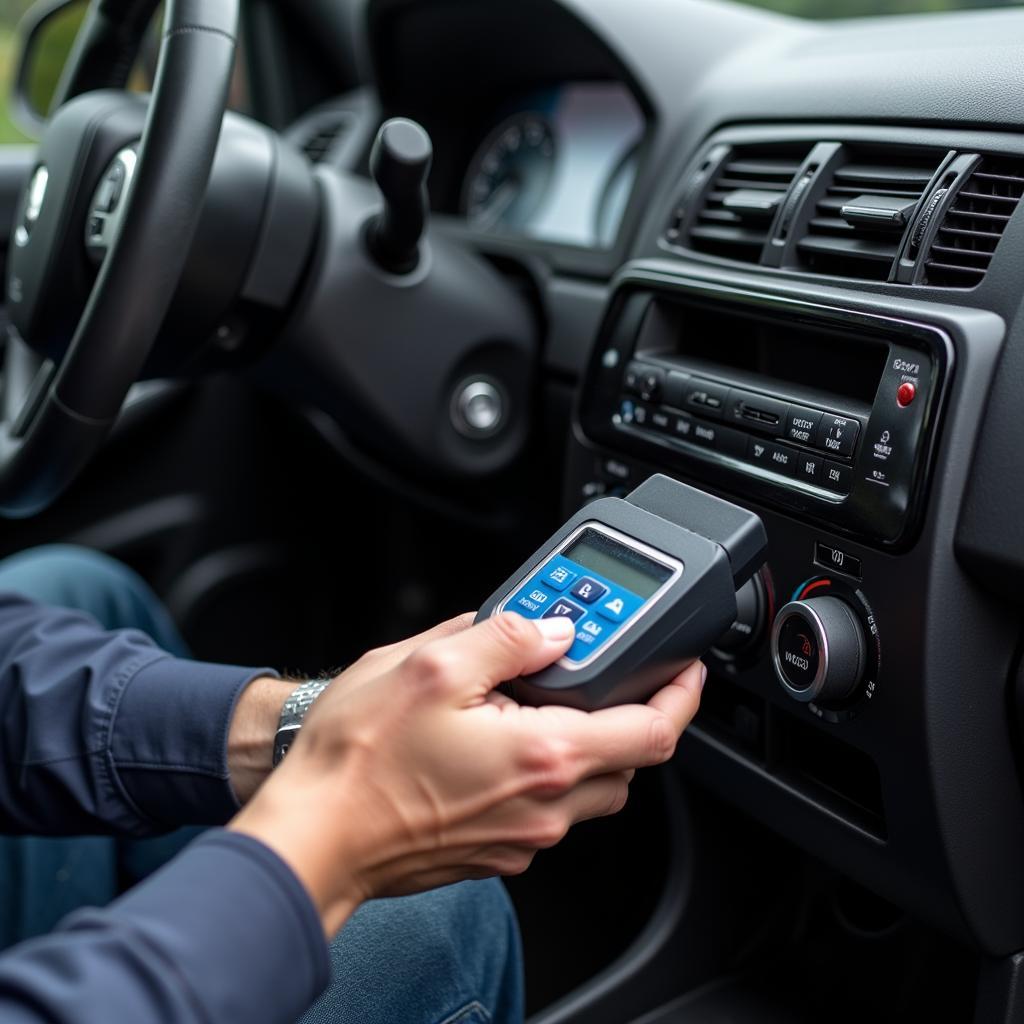Understanding what’s happening beneath the hood of your car used to be a mystery only mechanics could unravel. Now, thanks to car diagnostic codes, you can gain valuable insights into your vehicle’s health. This guide will equip you with the knowledge to Look Up Car Diagnostic Codes, decipher their meaning, and take the right steps for a solution.
What Are Car Diagnostic Codes?
Imagine your car’s computer system speaking a coded language. That’s essentially what car diagnostic codes are – standardized five-digit alphanumeric codes, each representing a specific issue detected in your vehicle.
These codes are generated by your car’s onboard computer, the Engine Control Unit (ECU), when it detects a malfunction within the engine, transmission, exhaust system, or other critical components.
“Think of diagnostic codes as your car sending you a postcard about its health,” says David Miller, Senior Automotive Engineer at DiagFixPro. “Instead of ignoring it, knowing how to read these codes helps you address the issue before it escalates.”
Why Should You Look Up Car Diagnostic Codes?
Knowing how to look up car diagnostic codes empowers you to:
- Identify the root cause of car problems: Instead of blindly guessing, you get a precise understanding of what’s triggering that “check engine” light.
- Save money on unnecessary repairs: Armed with the right information, you’re less likely to be upsold on unnecessary fixes at the mechanic shop.
- Address issues proactively: Early detection of potential problems can prevent costly repairs down the line.
- Become a more informed car owner: Understanding your vehicle’s health equips you to make better decisions regarding maintenance and repairs.
How to Look Up Car Diagnostic Codes
 OBD2 Scanner in Action
OBD2 Scanner in Action
Looking up car diagnostic codes might seem daunting, but it’s a straightforward process:
-
Obtain the Code:
- You can purchase an affordable OBD2 bluetooth diagnostic car scanner/reader tool that plugs into your car’s OBD2 port (usually located under the steering wheel).
- Some auto parts stores offer free code scanning services.
-
Note Down the Code: Once the scan is complete, jot down the five-digit code displayed on the scanner or consult a professional mechanic.
-
Consult Reliable Sources:
- Online OBD2 Code Lookup Tools: DiagFixPro offers a comprehensive database to look up car diagnostic codes for different makes and models.
- Repair Manuals: Your car’s repair manual often provides a detailed explanation of each diagnostic code.
- Automotive Forums: Online forums dedicated to your car model can offer insights from fellow car owners who have encountered similar codes.
Understanding the Structure of Diagnostic Codes
Each car diagnostic code follows a specific structure:
-
First Character: Indicates the system related to the fault:
- P: Powertrain (engine, transmission, emissions)
- B: Body (airbags, power seats, central locking)
- C: Chassis (ABS, traction control)
- U: Network communication
-
Second Character: Specifies whether the code is generic (applicable to all OBD2-compliant vehicles) or manufacturer-specific:
- 0: Generic (SAE – Society of Automotive Engineers)
- 1: Manufacturer-specific
-
Third Character: Identifies the specific system within the broader category indicated by the first character (e.g., fuel and air metering, ignition system, emissions).
-
Fourth & Fifth Characters: These two digits pinpoint the exact issue within the designated system.
Common Car Diagnostic Codes
While the possibilities are vast, some car diagnostic codes appear more frequently than others:
- P0420: Catalyst System Efficiency Below Threshold (Bank 1)
- P0300: Random/Multiple Cylinder Misfire Detected
- P0171: System Too Lean (Bank 1)
- P0442: Evaporative Emission Control System Leak Detected (Small Leak)
- P0135: O2 Sensor Heater Circuit Malfunction (Bank 1, Sensor 1)
What to Do After Looking Up a Code
 Mechanic Repairing Car Engine
Mechanic Repairing Car Engine
-
Research the Code Thoroughly: Understand the potential causes, symptoms, and common solutions associated with the specific code.
-
Consider Your Skill Level: While some issues may be simple DIY fixes, others require specialized knowledge and tools.
-
Consult a Qualified Mechanic (If Needed): If you’re unsure about tackling the issue yourself, seek help from a qualified mechanic specializing in car diagnostic tools.
-
Keep Records of Repairs: Documenting repairs helps you track your car’s maintenance history and can be valuable information for future troubleshooting.
“Remember, even if you’re not a mechanic, understanding car diagnostic codes gives you a significant advantage,” advises Sarah Thompson, Lead Automotive Technician at DiagFixPro. “It allows you to communicate more effectively with mechanics and make informed decisions about your car’s well-being.”
Conclusion
Looking up car diagnostic codes doesn’t have to be a mechanic-only skill. By understanding these codes, you become an empowered car owner, equipped to diagnose problems, make informed decisions, and potentially save money on unnecessary repairs. DiagFixPro provides a wealth of resources, including comprehensive code definitions, to guide you through the process. Remember, a little knowledge about your car goes a long way.

Leave a Reply